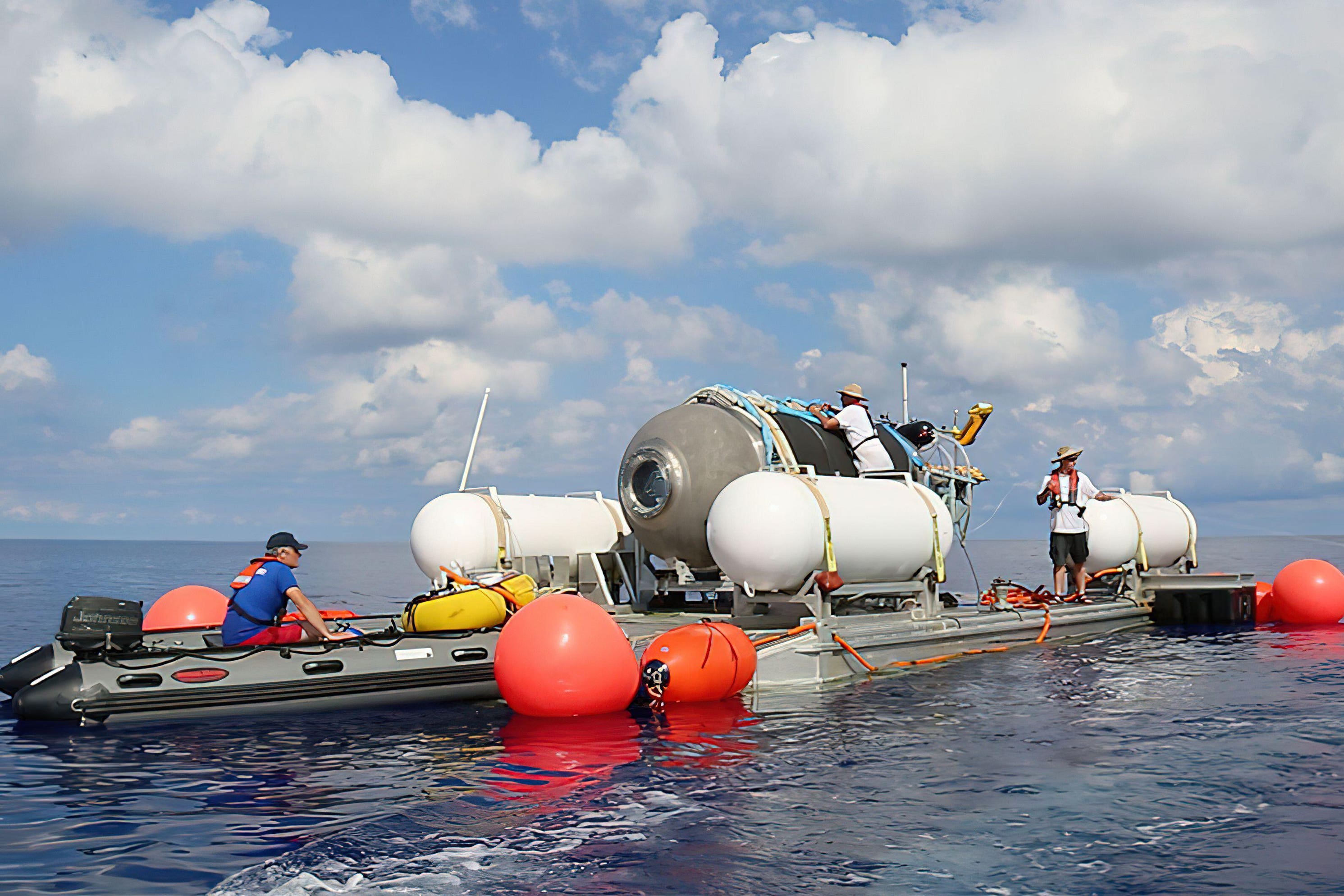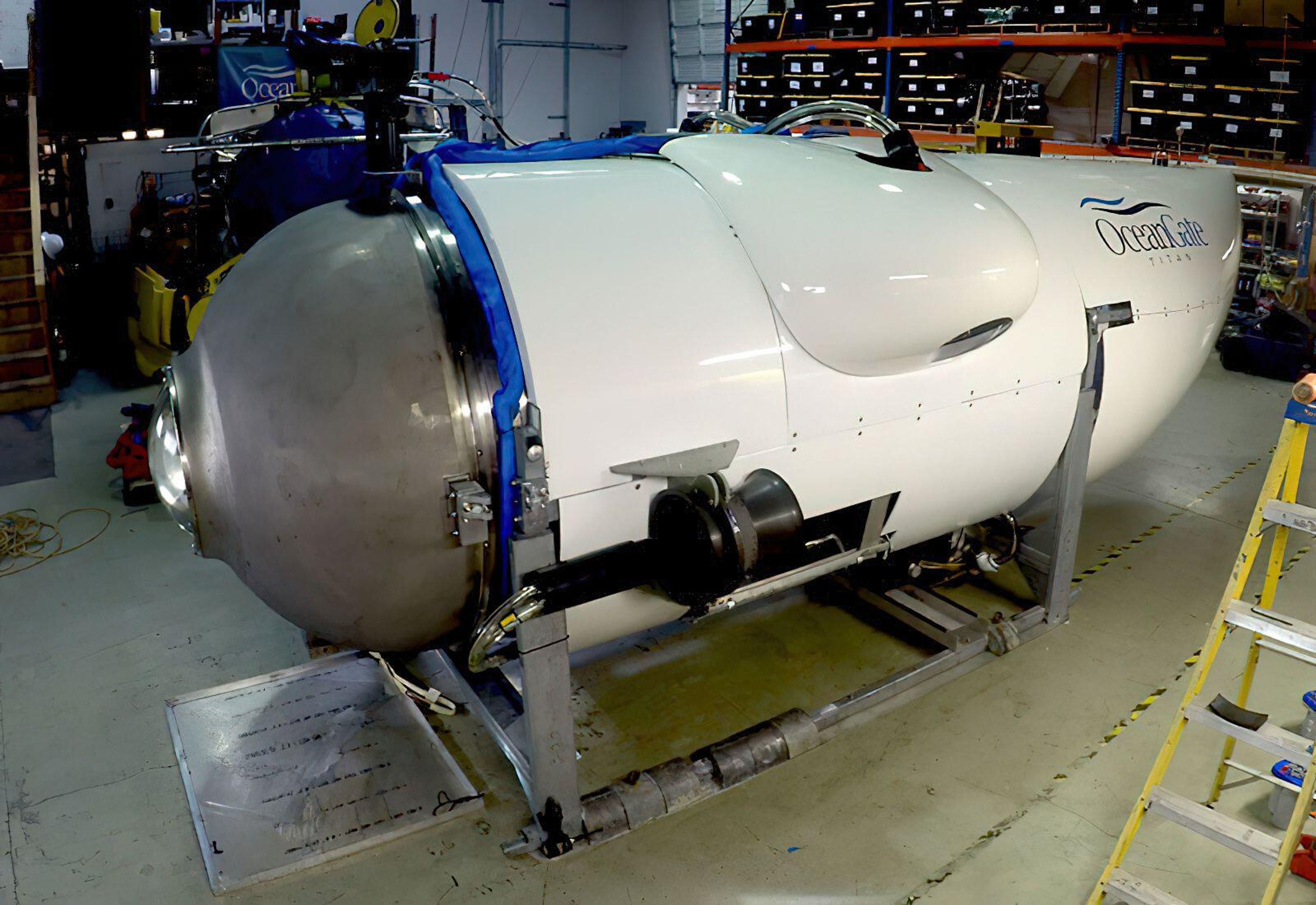Toxic gases and claustrophobia: The challenges facing Titanic sub five as they cling on for rescue
As oxygen levels inside the Titan dwindle, those trapped inside have more than low air supplies to contend with, as a scientific paper reveals. Joe Sommerlad reports
Your support helps us to tell the story
From reproductive rights to climate change to Big Tech, The Independent is on the ground when the story is developing. Whether it's investigating the financials of Elon Musk's pro-Trump PAC or producing our latest documentary, 'The A Word', which shines a light on the American women fighting for reproductive rights, we know how important it is to parse out the facts from the messaging.
At such a critical moment in US history, we need reporters on the ground. Your donation allows us to keep sending journalists to speak to both sides of the story.
The Independent is trusted by Americans across the entire political spectrum. And unlike many other quality news outlets, we choose not to lock Americans out of our reporting and analysis with paywalls. We believe quality journalism should be available to everyone, paid for by those who can afford it.
Your support makes all the difference.The search for a submarine carrying five people that went missing on its way to view the wreckage of the Titanic continues on Wednesday, with a growing number of ships and aircraft joining the US-Canadian rescue effort.
The Titan sub, which is operated by OceanGate Expeditions and has taken fee-paying customers on tours of the disintegrating remains of the doomed ocean liner since 2021, lost contact with its tracking ship, the Polar Prince, on Sunday afternoon, sparking a desperate race to retrieve it before the air supply inside is exhausted.
Stockton Rush, the company’s founder, was part of the crew on board the sub when it vanished, alongside British billionaire explorer Hamish Harding, renowned French diver Paul-Henri Nargeolet, Pakistani businessman Shahzada Dawood and the latter’s son, Sulaiman Dawood.
Follow the latest updates on the missing Titanic submarine here.

More than 10,000 square miles of the North Atlantic have been searched so far, according to the US Coast Guard, with reports that regular “tapping sounds” were picked up by sonar on Tuesday, providing fresh hope that the occupants are alive and Titan might yet be found.
Five additional rescue vessels will arrive in the next 24-48 hours, after the estimated time when the Titan’s oxygen reserves will have been exhausted.
However, the French ship Atalante carrying the Victor 6,000 underwater (ROV) and winch — the only one capable of reaching the Titanic wreck 4,000m under the ocean surface — is only expected to reach the search site on Wednesday night.
Friends of the missing men have attempted to remain positive, with businessman Oisin Fanning telling BBC Radio 4’s Today programme on Wednesday morning that “there’s a very good chance they will be found”. He insisted that Mr Rush and Mr Nargeolet are “consummate professionals” who will fully understand the realities of their plight and have urged their fellow passengers “not to panic”.
“If I was in trouble, I’d want to be on a sub with them,” Mr Fanning said. “They will be conserving energy from day one. So I wouldn’t be surprised if the action lasts a lot longer because they’ll know exactly what to do.”
More pessimistic about their prospects of survival was retired British Navy rear admiral Chris Parry, who told LBC that without an “emitting signal” from the craft it will be “impossible” to find it within such a limited timescale.
“I’m afraid the odds are vanishingly small,” he said. “Obviously, we want to remain hopeful and optimistic but there are two problems here – one is actually finding the thing and secondly, is how on earth are you going to get it off the seabed. It’s never been done before and I don’t think anybody’s got any ideas about how to do it at the moment.”
As to what conditions the five men might be enduring on board, a scientific paper published late last month offers a grim insight into the toll the ordeal threatens to take on any survivors.

Hypothermia
“Trapped crew in a sunken ship or submarine face many physiological challenges, including toxic gases, exposure to elevated ambient pressures, and hypothermia,” wrote Dr Dale Molé, the former director of undersea medicine and radiation health for the US Navy, in his paper on the subject for Ciottone’s Disaster Medicine, published on 29 May.
“Rescue is preferred over escape where possible. National and international governments and organisations must have a robust and reliable search and rescue response plan in place that is regularly exercised. Medical personnel must be well-versed on the unique attributes of maritime medicine, as well as being an integral part of any rescue team.”
Toxic gases
The principal danger, Dr Molé explains, is from gradual suffocation as the oxygen supply runs out, with the crew of the Titan having little more than one days’ worth left, according to official estimates, at the time of writing.
Most small vessels have a carbon dioxide scrubber built in to help extract toxic gases from the air, although the capacity is likely to be limited, particularly in such a small sub as the Titan, and such a device might have failed altogether if its battery power were interrupted or spent.
Panic attacks
The knock-on psychological effects of the situation could include a growing sense of claustrophobia, leading to increased heart rates, light-headedness, nausea and panic attacks, which could cause the sufferer to hyperventilate, placing an even greater strain on the already limited oxygen supply within the interior.

In addition, the low temperatures prevalent deep within the ocean outside could cause the occupants of the sub to suffer hypothermia, leading to shivering, loss of feeling in the hands and feet and impaired judgement, although this will be held off, for a while at least, by the internal heat emitted by their bodies and any electronics on board (although this is intentionally minimal in the case of the Titan).
“Anytime humans are confined in an airtight space, most people may think of oxygen, but carbon dioxide is actually a bigger concern,” Dr Molé told The Daily Mail.
“The people inside will find it difficult to breathe, their depth of respiration will increase. They’ll develop headaches and gradually become unconscious.
“The rising level of carbon dioxide is what kills people first when they’re in an airtight environment, not the level of oxygen.”
Loss of consciousness
Dr Molé said the impact of dwindling oxygen is “like putting a bag over your head” and will ultimately lead to a loss of consciousness.
“You want to try and stay as calm as possible and turn off as much electrical equipment as you can to conserve battery power and make sure you have enough energy for your scrubbers,” he advised.

Writing for Indy Voices this week, submariner David Bessell said the occupants are facing an anxious wait for rescue against the clock “with nothing but their own thoughts and desperate hope” for company, adding: “I cannot imagine, if they have not perished already, what can be going through the minds of the passengers and crew.”
All of the potential health impacts described by Dr Molé assume that conditions within the submersible remain stable.
If the opposite proves true, and the vessel’s integrity has been otherwise compromised, those inside would most likely have been killed instantly, as Mr Bessell suggests.
Eric Fusil, an associate professor and director of the shipbuilding hub at the University of Adelaide, Australia, has outlined several possible scenarios that could have led to such an outcome, including a power blackout, fire, flood or entanglement with another object in the sea.
A fire, he said, could incapacitate the vessel’s systems or create toxic fumes that could leave the crew unconscious. A flood would be even more dramatic, resulting in a near-instantaneous implosion.

The most optimistic scenario would be a power loss that allowed the vessel to return to the surface, where it would wait for search crews to find it, Prof Fusil said.
“The takeaway is that it’s easier to go and rescue people in space than to dive that deep and rescue people because we can’t communicate easily,” he said. “It’s still a very, very risky endeavour, even with the technology of today.”
Stressing the harshness of the icy waters surrounding the wreck of the Titanic, British diver Dik Barton told ITV’s Good Morning Britain: “It’s a very, very dangerous, hostile place to be. There’s a local ebb and current of water which moves around, it’s not consistent. The strength of the submersible is relatively limited.
“The thrusters are quite strong but, at the end of the day, you have to conserve your power because it’s your life support system and navigation system.”
Like Mr Fanning, Mr Barton was pinning his hopes on the expertise and experience of Mr Nargeolet to see his colleagues through: “He will be certainly doing all he possibly can to make sure everyone is calm and collected and waiting for recovery.”






Join our commenting forum
Join thought-provoking conversations, follow other Independent readers and see their replies
Comments